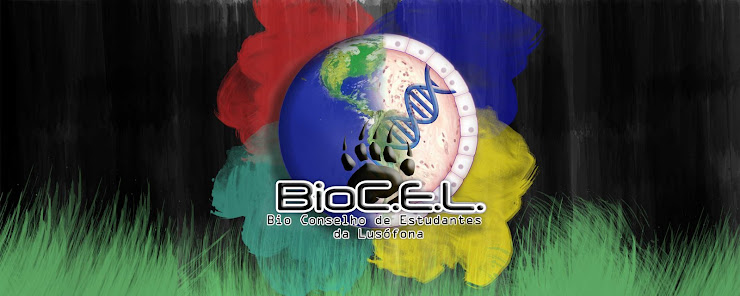Bolsa de Investigação: medula espinal
BOLSA DE INVESTIGAÇÃO
Referência: PTDC/SAU-NEU/65548/2006
Título do Projecto:
Processamento sensorial nas sinapses dos interneurónios excitatórios da
substantia gelatinosa da medula espinhal
substantia gelatinosa da medula espinhal
Código interno: PR 131002
Está aberto concurso para recrutamento de um(a) bolseiro(a) de Investigação para colaborar no
projecto acima referido, co-financiado pela Fundação para Ciência e a Tecnologia e pelo FEDER
através do programa PTDC. O/A bolseiro/a vai desempenhar um estudo de canais iónicos nos
neurónios sensoriais espinhais recorrendo à técnica patch-clamp. Espera-se que o/a bolseiro/a bem sucedido/a se candidate posteriormente a uma Bolsa de Doutoramento durante/após o 1º ano.
A bolsa, em regime de exclusividade, terá a duração inicial de 3 meses, renovável até 24 meses, com início previsto a 1 de Junho de 2008.
O valor mensal da bolsa será de € 745,00, pago por transferência bancária (preferencialmente).
Local de trabalho: Unidade do Morfofisiologia, IBMC.
Programa de trabalho: ver em baixo.
Perfil pretendido:
O/A candidato/a deverá ser licenciado/a em Biologia, Biofísica, Medicina, Química, Física ou área
afim, com a classificação mínima de 15 valores.
O prazo para recepção de candidaturas decorre de 14 a 28 de Maio de 2008.
As propostas deverão incluir uma carta de motivação e CV e ser enviadas para:
Boris Safronov
IBMC
Rua do Campo Alegre, 823
4150-180 Porto
Tel: +351-22-226074972
IBMC
Rua do Campo Alegre, 823
4150-180 Porto
Tel: +351-22-226074972
A contratação será regida pelo estipulado na legislação em vigor relativamente ao Estatuto de
Bolseiro de Investigação Cientifica, nomeadamente a Lei 40/2004, de 18 Agosto, e o Regulamento de Bolsas de Investigação Científica do IBMC(www.ibmc.up.pt/fellowships.php).
“Sensory processing in synapses of excitatory interneurons from the spinal substantia
gelatinosa”
Supervisor:
Doutor Boris Safronov
Project summary:
Understanding of mechanisms of pain critically relies on sensory processing in the spinal cord, where the nociceptive information is integrated and transmitted to the brain. Substantia gelatinosa (SG, lamina II) is a spinal cord region where most unmyelinated primary afferents terminate and the central nociceptive processing begins. The SG is formed by local interneurons many of which relate primary afferent input to nociceptive projection neurons from lamina I. It was for a long time believed that the SG is mostly formed by GABAergic inhibitory interneurons participating in both pre- and postsynaptic inhibition. Recently, we have developed a novel technique which allowed routine recording from pairs of synaptically connected SG neurons and have surprisingly found that vast majority (85 %) of SG interneurons are excitatory (2007, J
Physiol 581: 241-254). This implied that the spinal nociceptive processing in the SG is strongly dominated by excitatory integration. This finding revises the classical view on the sensory processing in the SG and indicated a vital importance of investigating unknown yet basic properties of synaptic connections formed by excitatory interneurons underlying this processing.
In this project we shall use the patch-clamp recording in spinal cord slices of rat and recently developed technique of identification of synaptically coupled SG neurons to study the basic properties of excitatory synaptic transmission of SG interneurons. Intracellular tight-seal recording from a postsynaptic neuron will be done with one electrode, while the second electrode will specifically stimulate a presynaptic neuron, in order to study:
1) the efficacy of synaptic transmission of SG neurons, that is how many action potentials and of what temporal pattern should be generated in a presynaptic neuron to provoke the changes in potential reaching the firing threshold in the postsynaptic neuron.
2) the functional properties and signaling in glutamatergic synapses of excitatory interneurons. In particular, we shall test specific pharmacology, in order to elucidate the subunit composition of postsynaptic receptors activated by transmitter release from terminals of presynaptic excitatory interneurons located in the SG.
3) whether the synapses formed by the SG interneurons exhibit any form of functional plasticity, like longterm potentiation and/or depression. It is conceivable that signaling at these glutamatergic synapses is highly dynamic like in many brain regions but it may utilize unique signaling pathways to regulate both synaptic strength and excitatory properties of interneurons. Such plasticity should have a profound effect on sensory integration in neuronal network of the SG.
We expect to provide new important insights into the functional, pharmacological and structural organization of synapses formed by different types of the SG excitatory interneurons
Selected Publications:
1) Santos, Rebelo, Derkach and Safronov (2007) Excitatory interneurons dominate sensory processing in the spinal substantia gelatinosa of rat. J Physiology 581: 241-254.
2) Santos, Melnick, Safronov (2004) Selective postsynaptic inhibition of tonic-firing neurons in substantia gelatinosa by μ-opioid agonist. Anesthesiology 101: 1177-1183.
3) Melnick, Santos, Safronov (2004) Mechanism of spike frequency adaptation in substantia gelatinosa neurons of rat. J Physiology 559: 383-395.
4) Safronov (1999) Spatial distribution of Na+ and K+ channels in spinal dorsal horn neurones: role of the soma, axon and dendrites in spike generation. Progress in Neurobiology 59: 217-241.
5) Safronov and Vogel (1999) Electrical activity of individual neurons: Patch-clamp techniques. In: Modern Techniques in Neuroscience Research. Springer, Berlin Heidelberg New York, pp. 173-192.


























































0 Pareceres Científicos:
Enviar um comentário